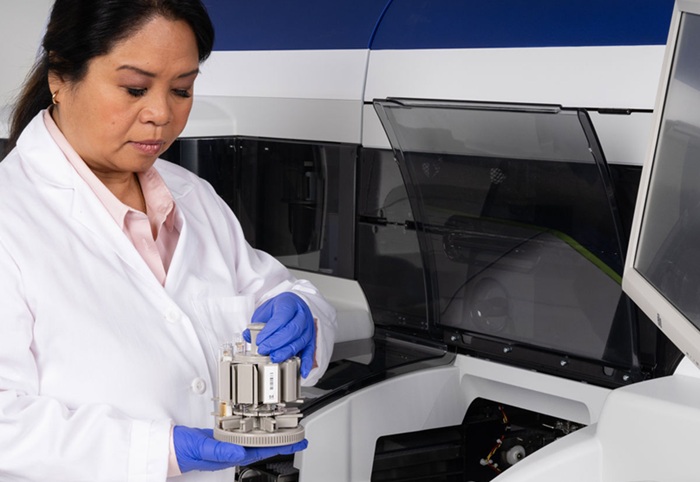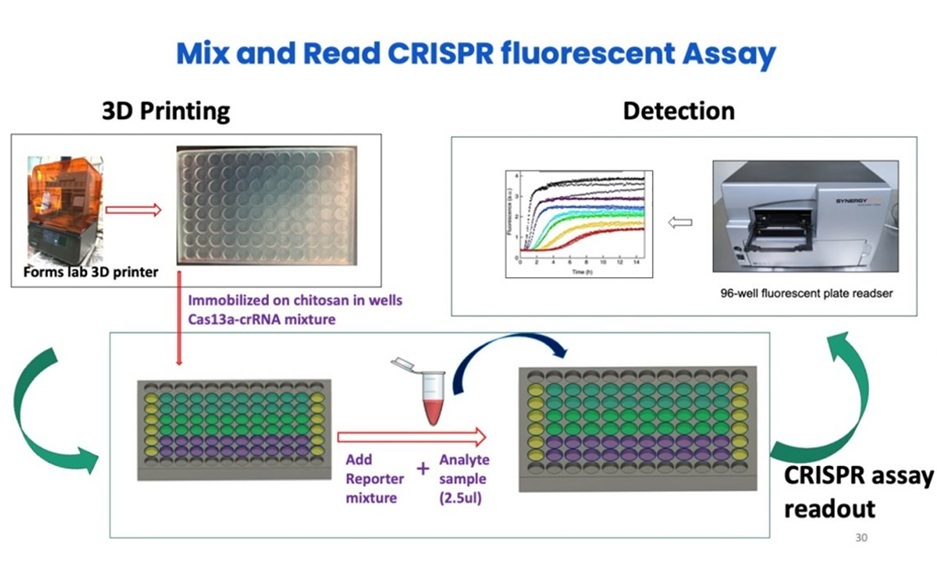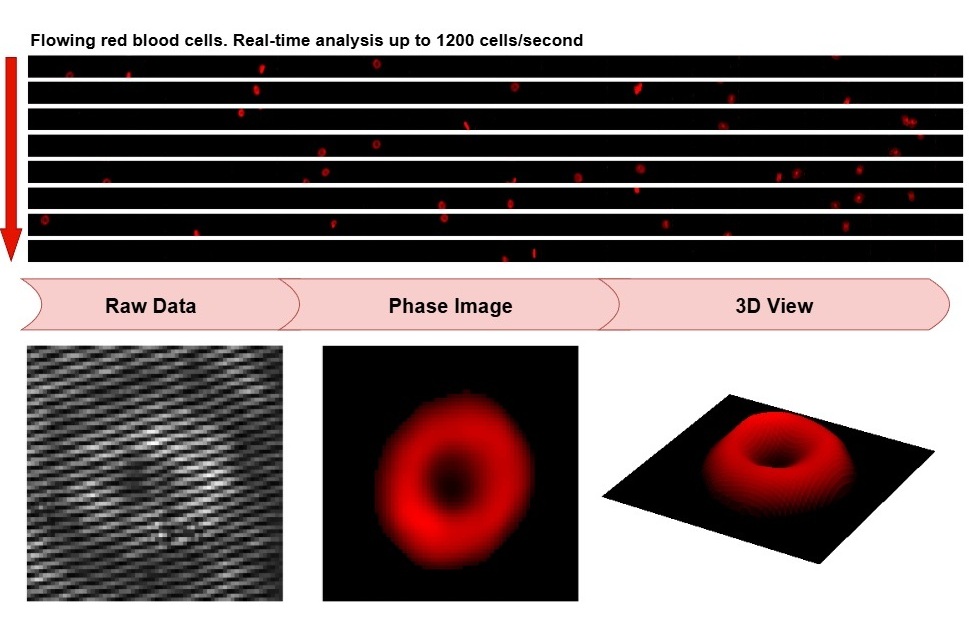21-Gene Recurrence Score Helps Radiation Decision-Making
|
By LabMedica International staff writers Posted on 21 Jan 2020 |
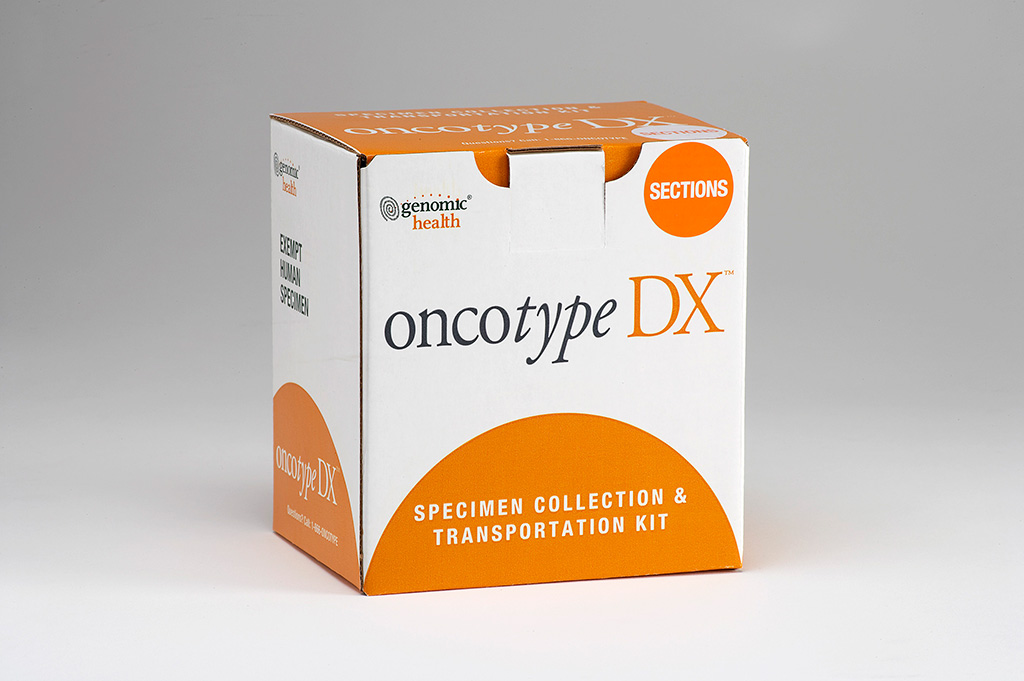
Image: The Oncotype DX specimen and collection kit for the Breast Cancer Recurrence Score Assay (Photo courtesy of Genomic Health).
A new study shows that a test that physicians commonly used to guide chemotherapy treatment for post-breast cancer surgery patients may also help them decide whether radiation therapy may be of benefit.
Known as the 21-gene recurrence score, the test is a personalized analysis of the activity of 21 genes found in a patient's breast tumor tissue. The score can be used to predict whether, after undergoing surgery, that patient's breast cancer is likely to return in another part of their body, like the bones or lungs, and whether that patient will likely benefit from chemotherapy treatment.
A large team of scientists led by those at the University of Texas MD Anderson Cancer Center (Houston, TX, USA) carried out a retrospective analysis of, a phase 3 randomized clinical trial of postmenopausal women with ER/PR-positive, node-positive breast cancer treated with tamoxifen alone, chemotherapy followed by tamoxifen, or concurrent tamoxifen and chemotherapy.
Primary analysis included 316 patients and excluded 37 who received both mastectomy and radiotherapy, nine who received breast-conserving surgery without documented radiotherapy, and five with unknown surgical type. All analyses were performed from January 22, 2016, to August 9, 2019. The team examined the association between recurrence score and locoregional recurrence (LRR) in the treated postmenopausal patient population. The 21-gene recurrence score test was the Oncotype DX Breast Recurrence Score (Genomic Health, Inc, Redwood City, CA, USA).
The investigators reported that median (interquartile range) follow-up for those without LRR was 8.7 (7.0-10.2) years. Seven LRR events (5.8%) among 121 patients with low recurrence score and 27 LRR events (13.8%) among 195 patients with intermediate or high recurrence score occurred. The estimated 10-year cumulative incidence rates were 9.7% for those with a low recurrence score and 16.5% for the group with intermediate or high recurrence score. Among 252 patients who had a mastectomy without radiotherapy, the differences in the 10-year actuarial LRR rates remained significant: 7.7 % for the low recurrence score group versus 16.8% for the intermediate or high recurrence score group.
In a subset analysis of patients with a mastectomy and one to three involved nodes who did not receive radiation therapy, the group with a low recurrence score had a 1.5% rate of LRR, whereas the group with an intermediate or high recurrence score had an 11.1% LRR. Wendy A. Woodward, MD, PhD, a professor and the lead investigator, said, “We believe these data support using recurrence scores - along with standard clinical factors like age or tumor size - to determine risk of recurrence and radiotherapy decisions for patients.”
The authors concluded that higher recurrence scores were associated with increased LRR after adjustment for treatment, type of surgical procedure, and number of positive nodes. This finding suggests that the recurrence score may be used, along with accepted clinical variables, to assess the risk of LRR during radiotherapy decision-making. The study was published on January 9, 2020 in the journal JAMA Oncology
Related Links:
University of Texas MD Anderson Cancer Center
Genomic Health, Inc
Known as the 21-gene recurrence score, the test is a personalized analysis of the activity of 21 genes found in a patient's breast tumor tissue. The score can be used to predict whether, after undergoing surgery, that patient's breast cancer is likely to return in another part of their body, like the bones or lungs, and whether that patient will likely benefit from chemotherapy treatment.
A large team of scientists led by those at the University of Texas MD Anderson Cancer Center (Houston, TX, USA) carried out a retrospective analysis of, a phase 3 randomized clinical trial of postmenopausal women with ER/PR-positive, node-positive breast cancer treated with tamoxifen alone, chemotherapy followed by tamoxifen, or concurrent tamoxifen and chemotherapy.
Primary analysis included 316 patients and excluded 37 who received both mastectomy and radiotherapy, nine who received breast-conserving surgery without documented radiotherapy, and five with unknown surgical type. All analyses were performed from January 22, 2016, to August 9, 2019. The team examined the association between recurrence score and locoregional recurrence (LRR) in the treated postmenopausal patient population. The 21-gene recurrence score test was the Oncotype DX Breast Recurrence Score (Genomic Health, Inc, Redwood City, CA, USA).
The investigators reported that median (interquartile range) follow-up for those without LRR was 8.7 (7.0-10.2) years. Seven LRR events (5.8%) among 121 patients with low recurrence score and 27 LRR events (13.8%) among 195 patients with intermediate or high recurrence score occurred. The estimated 10-year cumulative incidence rates were 9.7% for those with a low recurrence score and 16.5% for the group with intermediate or high recurrence score. Among 252 patients who had a mastectomy without radiotherapy, the differences in the 10-year actuarial LRR rates remained significant: 7.7 % for the low recurrence score group versus 16.8% for the intermediate or high recurrence score group.
In a subset analysis of patients with a mastectomy and one to three involved nodes who did not receive radiation therapy, the group with a low recurrence score had a 1.5% rate of LRR, whereas the group with an intermediate or high recurrence score had an 11.1% LRR. Wendy A. Woodward, MD, PhD, a professor and the lead investigator, said, “We believe these data support using recurrence scores - along with standard clinical factors like age or tumor size - to determine risk of recurrence and radiotherapy decisions for patients.”
The authors concluded that higher recurrence scores were associated with increased LRR after adjustment for treatment, type of surgical procedure, and number of positive nodes. This finding suggests that the recurrence score may be used, along with accepted clinical variables, to assess the risk of LRR during radiotherapy decision-making. The study was published on January 9, 2020 in the journal JAMA Oncology
Related Links:
University of Texas MD Anderson Cancer Center
Genomic Health, Inc
Latest Pathology News
- Highly Sensitive Imaging Technique Detects Myelin Damage
- 3D Genome Mapping Tool to Improve Diagnosis and Treatment of Genetic Diseases
- New Molecular Analysis Tool to Improve Disease Diagnosis
- Tears Offer Noninvasive Alternative for Diagnosing Neurodegenerative Diseases
- AI-Powered Method Combines Blood Data to Accurately Measure Biological Age
- AI Tool Detects Cancer in Blood Samples In 10 Minutes
- AI Pathology Analysis System Delivers Comprehensive Cancer Diagnosis
- AI Improves Cervical Cancer Screening in Low-Resource Settings
- New Multi-Omics Tool Illuminates Cancer Progression
- New Technique Detects Genetic Mutations in Brain Tumors During Surgery within 25 Minutes
- New Imaging Tech to Improve Diagnosis and Treatment of Skin Cancers
- Serially Testing Brain Tumor Samples Reveals Treatment Response in Glioblastoma Patients
- High-Accuracy Tumor Detection Method Offers Real-Time Surgical Guidance
- AI Tool Detects Hidden Warning Signs of Disease Inside Single Cells
- Automated Tool Detects Early Warning Signs of Breast Cancer
- New Software Tool Improves Analysis of Complex Spatial Data from Tissues
Channels
Clinical Chemistry
view channel
VOCs Show Promise for Early Multi-Cancer Detection
Early cancer detection is critical to improving survival rates, but most current screening methods focus on individual cancer types and often involve invasive procedures. This makes it difficult to identify... Read more
Portable Raman Spectroscopy Offers Cost-Effective Kidney Disease Diagnosis at POC
Kidney disease is typically diagnosed through blood or urine tests, often when patients present with symptoms such as blood in urine, shortness of breath, or weight loss. While these tests are common,... Read moreMolecular Diagnostics
view channel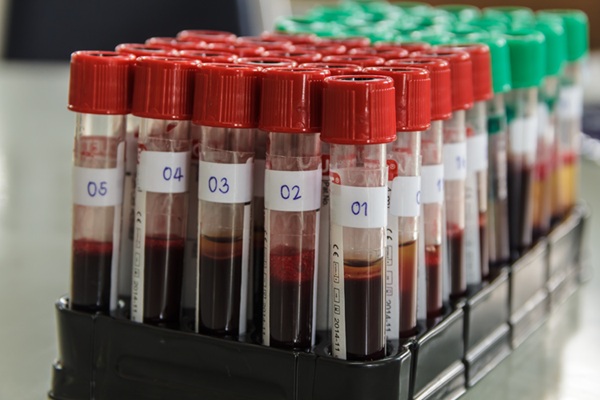
Dual Blood Biomarkers Improve ALS Diagnostic Accuracy
Diagnosing amyotrophic lateral sclerosis (ALS) remains difficult even with advanced imaging and genetic tools, especially when clinicians must distinguish it from other neurodegenerative conditions that... Read more
Automated Test Distinguishes Dengue from Acute Fever-Causing Illnesses In 18 Minutes
Dengue fever remains the most common mosquito-borne viral infection worldwide, posing a major public health challenge as global cases continue to surge. In 2024 alone, more than 14.6 million infections... Read moreHematology
view channel
ADLM’s New Coagulation Testing Guidance to Improve Care for Patients on Blood Thinners
Direct oral anticoagulants (DOACs) are one of the most common types of blood thinners. Patients take them to prevent a host of complications that could arise from blood clotting, including stroke, deep... Read more
Viscoelastic Testing Could Improve Treatment of Maternal Hemorrhage
Postpartum hemorrhage, severe bleeding after childbirth, remains one of the leading causes of maternal mortality worldwide, yet many of these deaths are preventable. Standard care can be hindered by delays... Read more
Pioneering Model Measures Radiation Exposure in Blood for Precise Cancer Treatments
Scientists have long focused on protecting organs near tumors during radiotherapy, but blood — a vital, circulating tissue — has largely been excluded from dose calculations. Each blood cell passing through... Read moreImmunology
view channel
Chip Captures Cancer Cells from Blood to Help Select Right Breast Cancer Treatment
Ductal carcinoma in situ (DCIS) accounts for about a quarter of all breast cancer cases and generally carries a good prognosis. This non-invasive form of the disease may or may not become life-threatening.... Read more
Blood-Based Liquid Biopsy Model Analyzes Immunotherapy Effectiveness
Immunotherapy has revolutionized cancer care by harnessing the immune system to fight tumors, yet predicting who will benefit remains a major challenge. Many patients undergo costly and taxing treatment... Read moreMicrobiology
view channel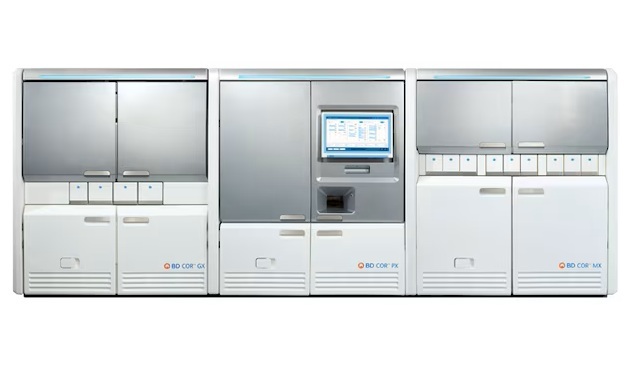
High-Throughput Enteric Panels Detect Multiple GI Bacterial Infections from Single Stool Swab Sample
Gastrointestinal (GI) infections are among the most common causes of illness worldwide, leading to over 1.7 million deaths annually and placing a heavy burden on healthcare systems. Conventional diagnostic... Read more
Fast Noninvasive Bedside Test Uses Sugar Fingerprint to Detect Fungal Infections
Candida bloodstream infections are a growing global health threat, causing an estimated 6 million cases and 3.8 million deaths annually. Hospitals are particularly vulnerable, as weakened patients after... Read moreTechnology
view channel
Portable Biosensor Diagnoses Psychiatric Disorders Using Saliva Samples
Early diagnosis of psychiatric disorders such as depression, schizophrenia, and bipolar disorder remains one of medicine’s most pressing challenges. Current diagnostic methods rely heavily on clinical... Read more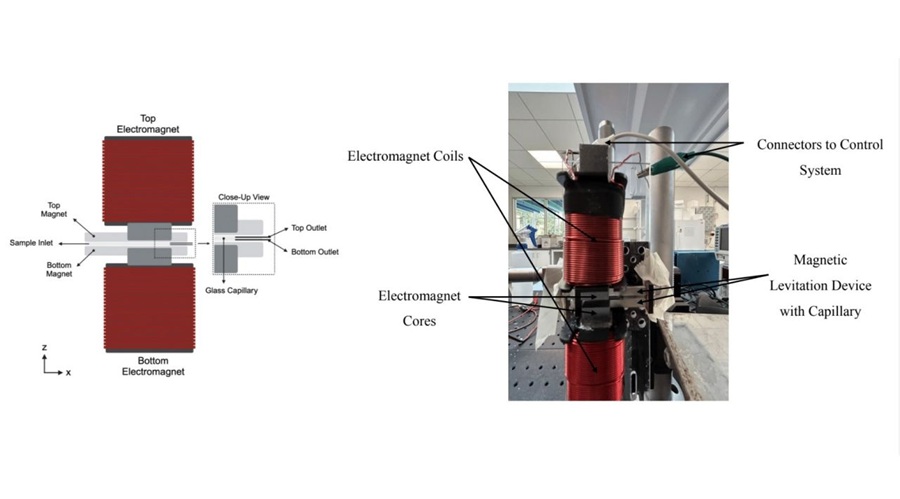
Cell-Sorting Device Uses Electromagnetic Levitation to Precisely Direct Cell Movement
Sorting different cell types—such as cancerous versus healthy or live versus dead cells—is a critical task in biology and medicine. However, conventional methods often require labeling, chemical exposure,... Read moreIndustry
view channel
Co-Diagnostics Forms New Business Unit to Develop AI-Powered Diagnostics
Co-Diagnostics, Inc. (Salt Lake City, UT, USA) has formed a new artificial intelligence (AI) business unit to integrate the company's existing and planned AI applications into its Co-Dx Primer Ai platform.... Read more







 assay.jpg)





